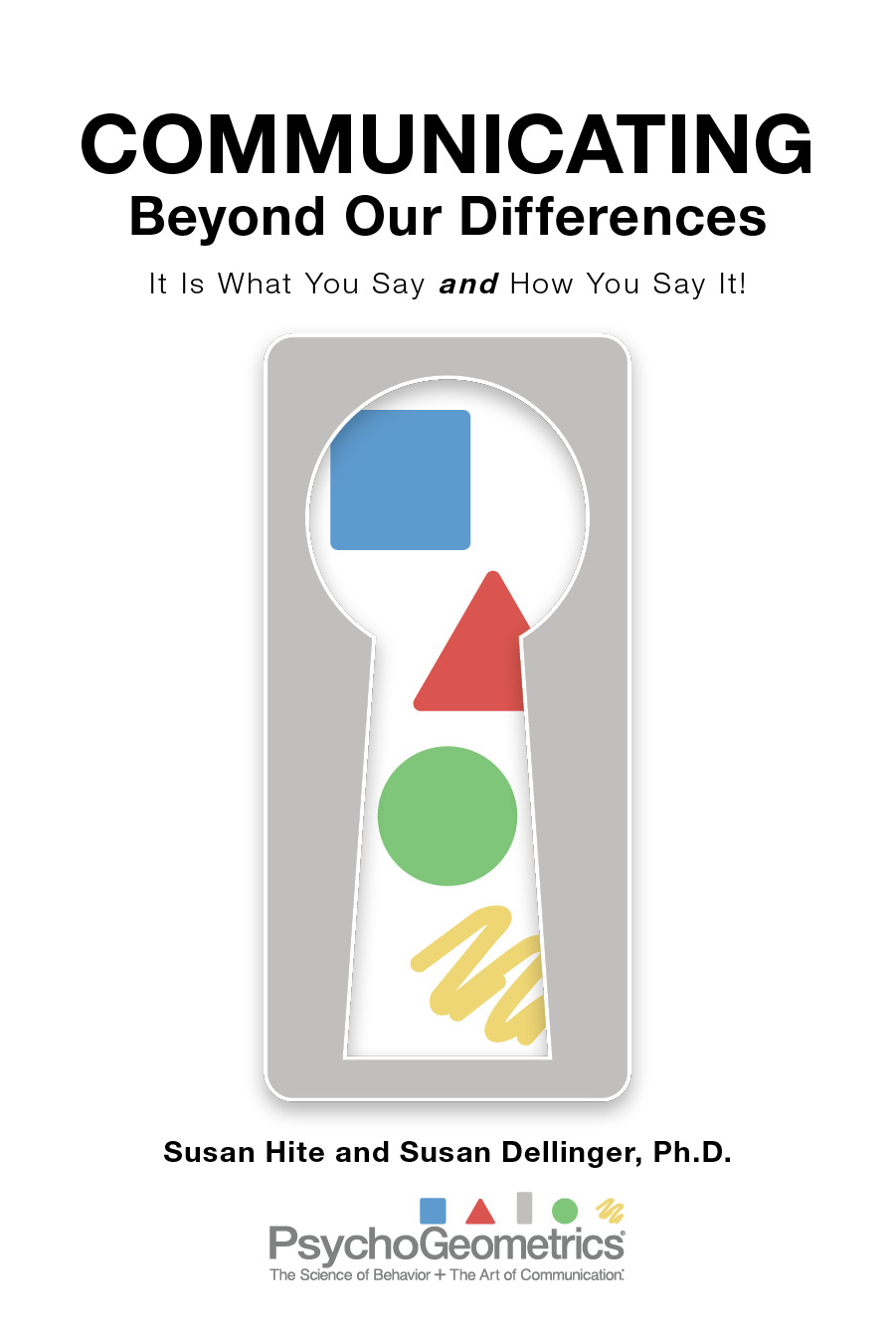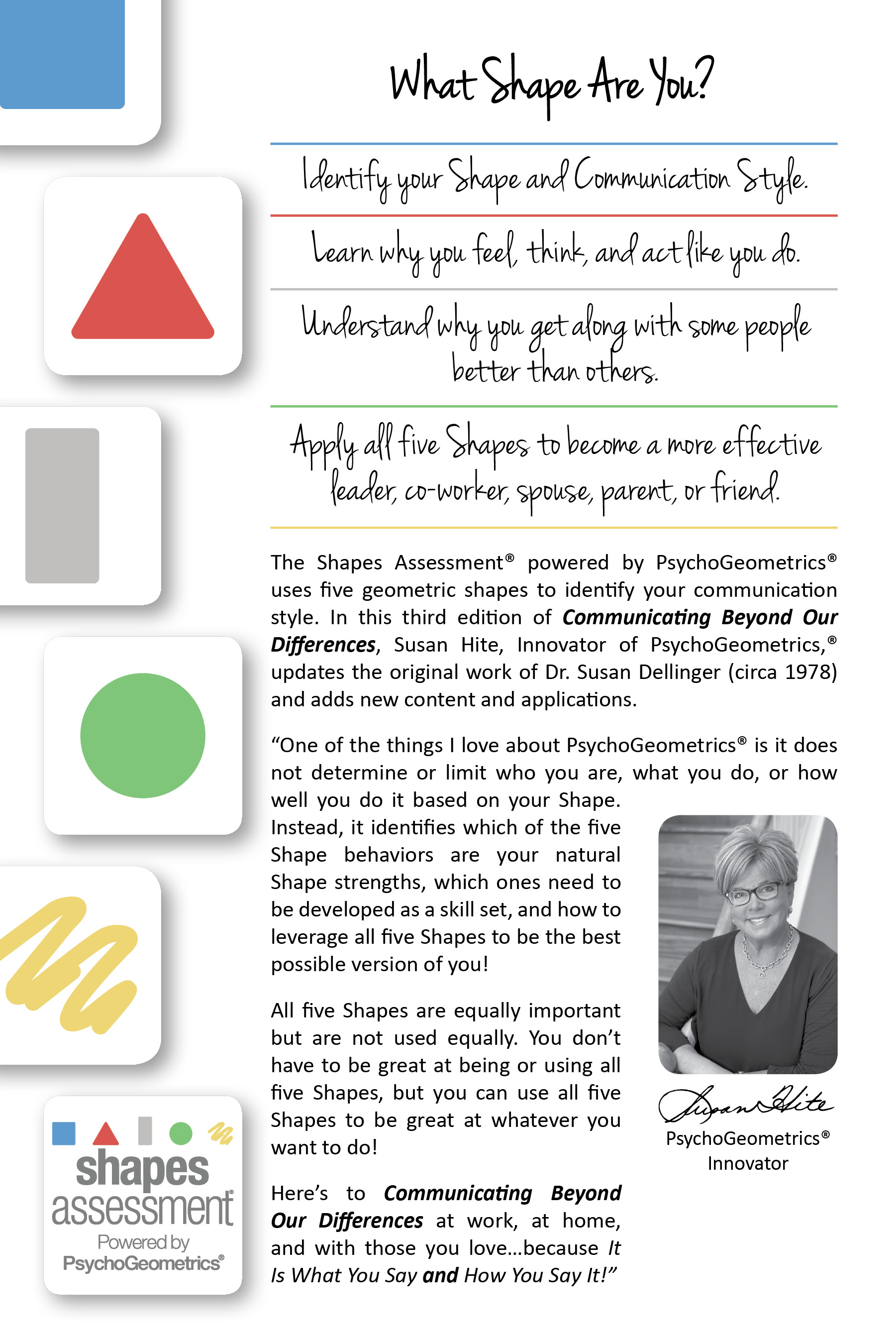



Instead of using a letter or letters, a color or colors, or a specific word or list of words, PsychoGeometrics® uses five geometric shapes representing five behaviors to identify your communication style. In this new edition of Communicating Beyond Our Differences – It Is What You Say and How You Say It! you will learn what your Shape says about who you are (traits), what you do (behavior), and how you relate to others (interaction).
It has been 34 years since this book was first written and published. In 2008, it was updated for the second time, and now 15 years later it has been rewritten by Susan Hite, adding new content and updating the remaining content from the original author (1989) and creator of PsychoGeometrics® (1978), Susan E. Dellinger, Ph.D.
As a result of reading this book, you will:
All five Shapes are equally important but are not used equally.
One size does not fit all. That's the beauty of PsychoGeometrics.
You don't have to be great at being or using all five Shapes, but you can use all five Shapes to be great (and effective) in your personal and/or professional role(s).
Here's to Communicating Beyond Our Differences with those you live and work with everyday…because It Is What You Say and How You Say It!
Preface
Section One: PsychoGeometrics
Chapter 1: An Overview of PsychoGeometrics 27
Chapter 2: The Logical Box
Chapter 3: The Bottom-Line Triangle
Chapter 4: The Open-Minded Rectangle
Chapter 5: The Caring Circle
Chapter 6: The Creative Squiggle
Chapter 7: Shapes Summary
Section Two: Shape Applications
Chapter 8: Shape Perception
Discover how you may “see” others and how others may “see” you. Who you are, what you do, and how you interact with others can be perceived both positively and negatively. Awareness is key.
Chapter 9: Shape Flexing
Learn how to Shape Flex to be more effective in your communication style, while still being true to who you are. Maximize, minimize, manage, or modify your Shapes and Shape Flex to communicate with others in “the way they like to be treated,” and turn any negative perceptions of your traits, behaviors, and interactions into positive ones.
Chapter 10: Shape Motivation
Explore what motivates and demotivates each Shape and how motivation, or lack thereof, impacts relationships, teams, and overall communication.
Chapter 11: Strategic Shaping
A communication process that identifies the Shape order of what to say and the Shape style for how to say it. Especially helpful for Engagement, Retention, Leadership, Team Building, Sales and Service Excellence, Crucial Conversations, Feedback, and Coaching.
Section Three: A Deeper Dive into The Five Shapes
The deeper dive includes more of the Shape behaviors, interactions, and relationships, both personally and professionally, such as:
Chapter 12: The Stubborn but Dependable Box
Chapter 13: The Intimidating but Empowering Triangle
Chapter 14: The Indecisive but Growing Rectangle
Chapter 15: The Sensitive but Inclusive Circle
Chapter 16: The Eccentric but Innovative Squiggle
Chapter 17: Epilogue
Chapter 18: Appendix